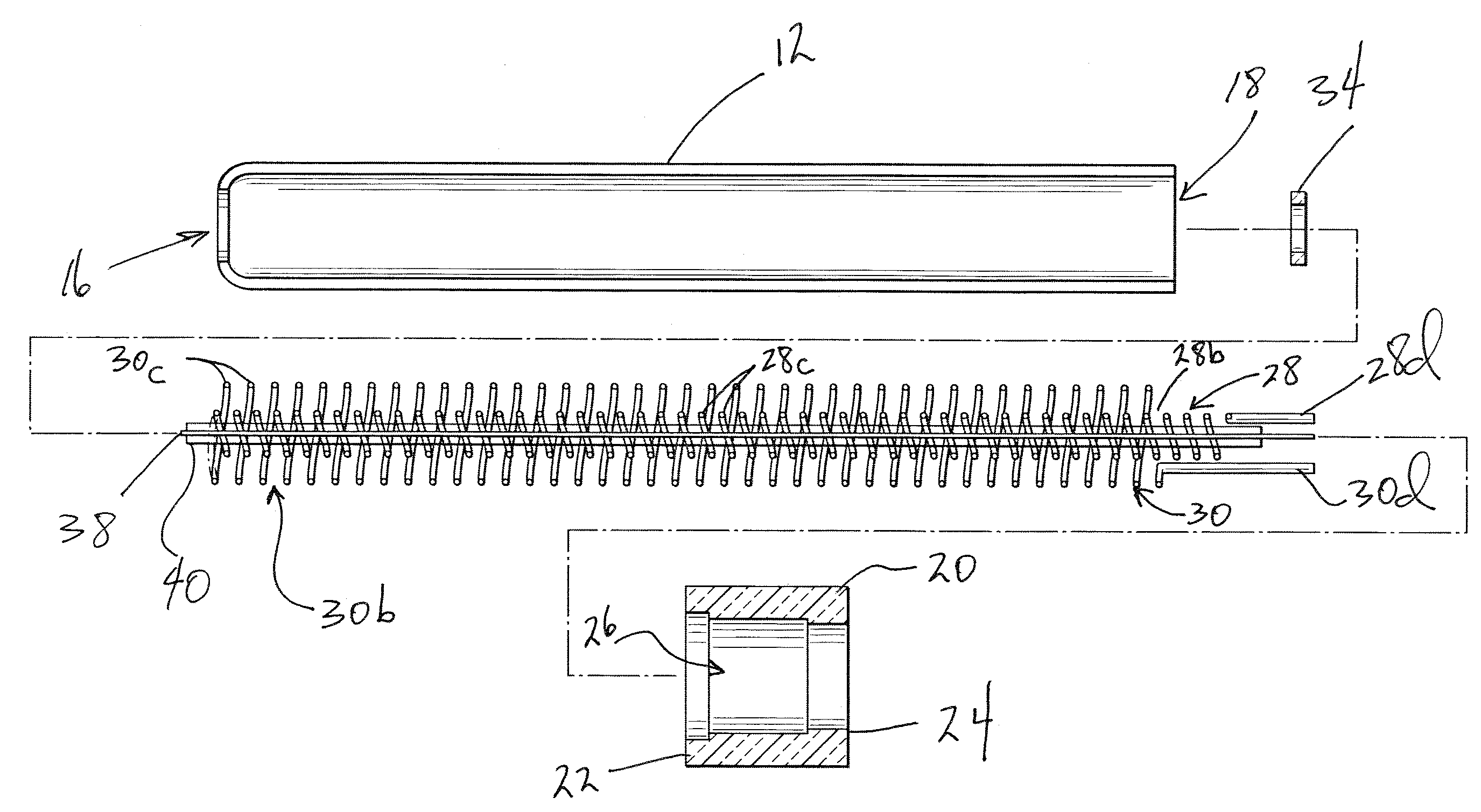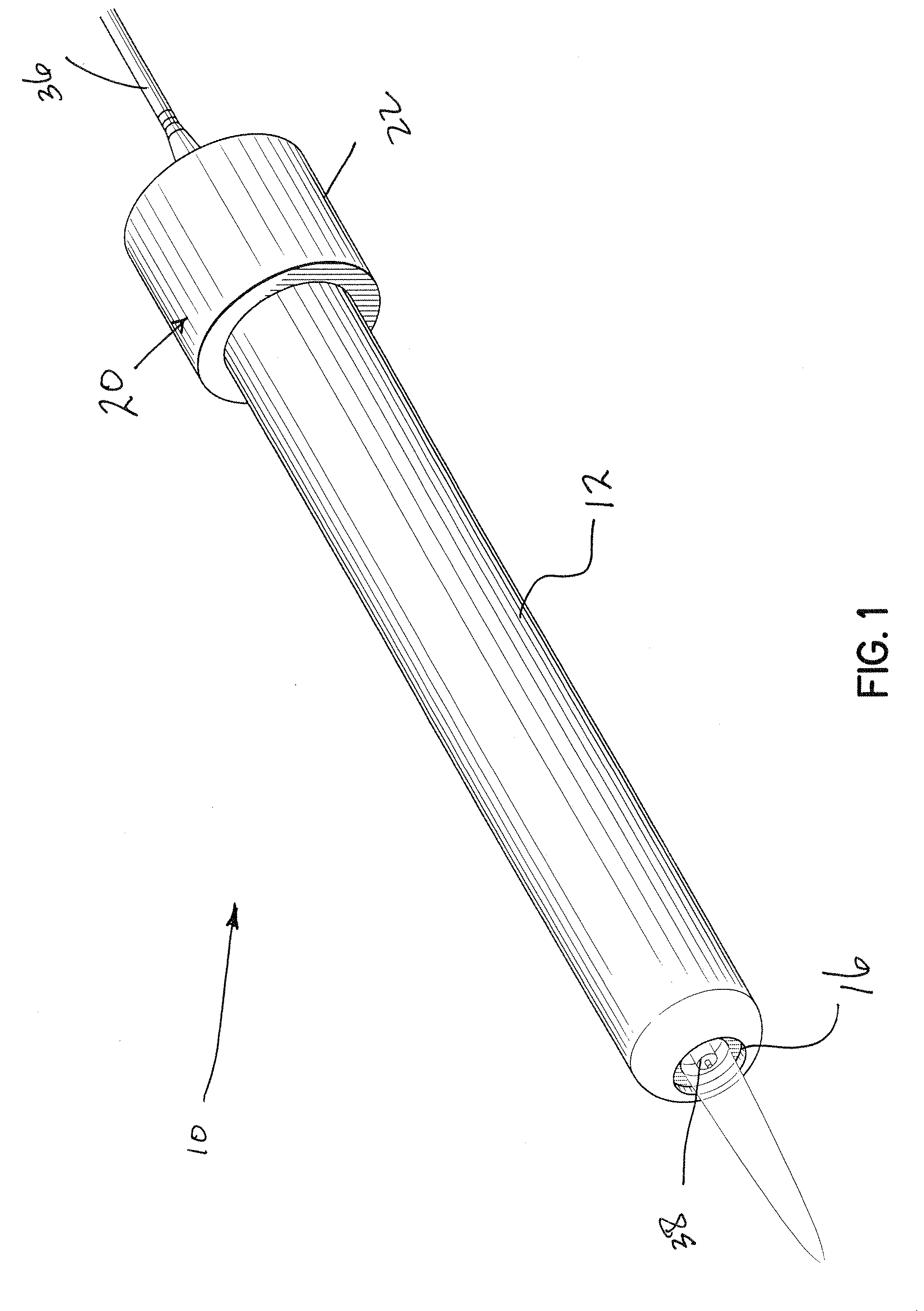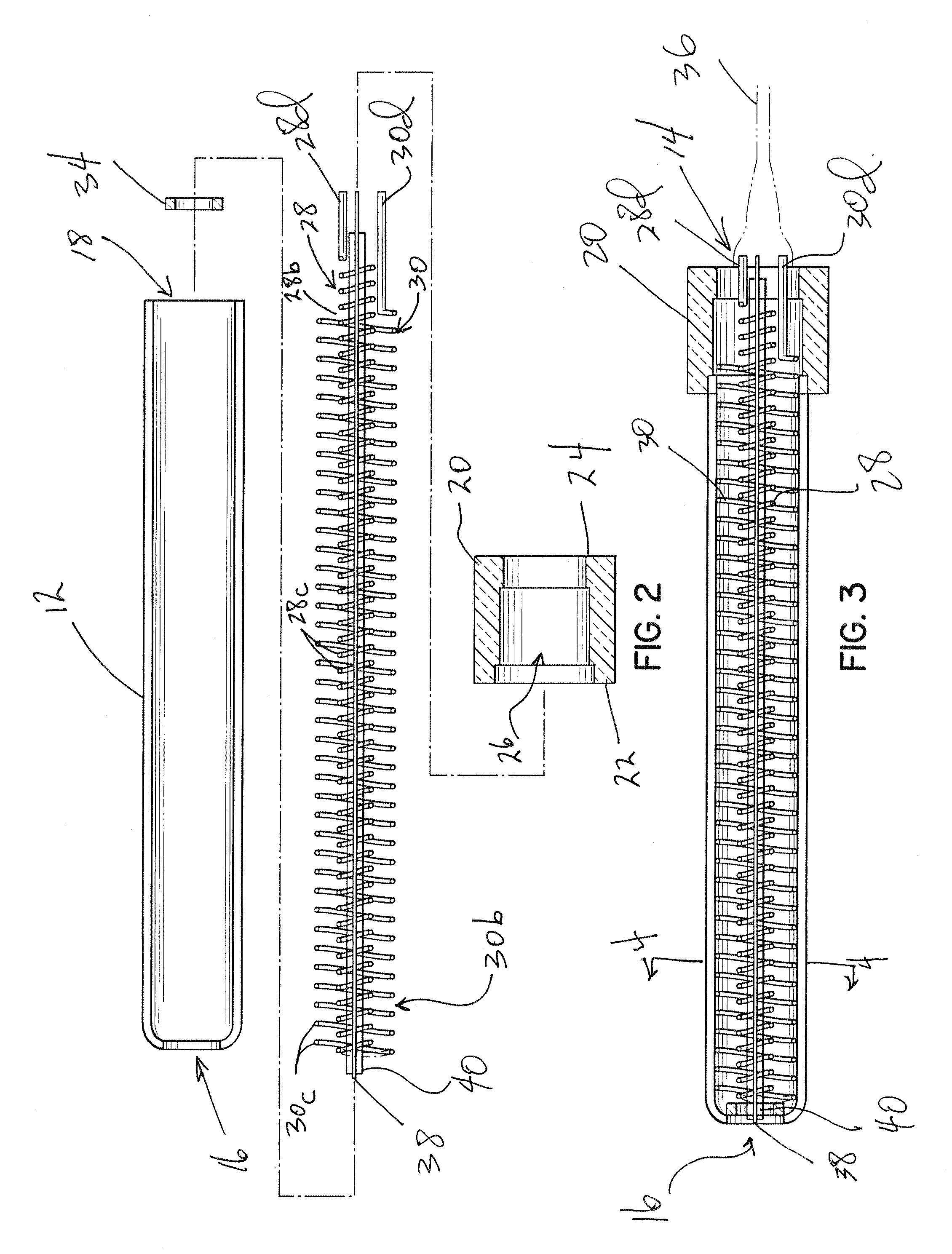Convective heating system for industrial applications
a heating system and industrial technology, applied in lighting and heating apparatus, ohmic resistance heating, physical therapy, etc., can solve the problems of slow natural convection non-uniformity and distortion, etc., to minimize the deformation of the coil, maximize the heat transfer to the gas, and minimize the effect of gas flow
- Summary
- Abstract
- Description
- Claims
- Application Information
AI Technical Summary
Benefits of technology
Problems solved by technology
Method used
Image
Examples
experiment 1
[0051] The outer coil 30 provides rifling of the gas that increases heat transfer from the coil to the gas. A helical coil wire 30a of 240 mm long and 13.2 mm mean diameter, working out for 8.2 Ohms (18 SWG A1 commercial wire) was used for testing. The coil was inserted in an open-ended ceramic tube 12. The exit end of the coil was brought back to the inlet side through a ceramic insulating tube. The coil was operated at 110V, at a power rating of 1.47 kW. The airflow was maintained at 5 SCFM@ 0.4 Kgs / cm2 working pressure. The exit temperature of the air stabilized at 560° C.
experiment 2
[0052] The inner coil 28 over comes the conda surface effect, and provides for annular area heating of the gas, which provides for the highest heat transfer to the gas. The exit end of the coil 28 was wound on its return on the ceramic insulating tubular housing 12. The resulting coil resistance was 10.8 Ohms. The coil 28 was operated with the same airflow, air pressure and operating voltage of 110V as in Experiment 1. The coil now operated at 1.1 kW, and the exit temperature stabilized at 806° C.
experiment 3
[0053] The inner coil 28 was wound in the opposite direction of the outer coil 30 to provide opposite rifling to the gas with respect to the outer coil. This causes a turbulence effect on the airflow, which increases heat transfer to the gas. All other parameters were the same as Experiment 2. The exit temperature stabilized at 845° C. Therefore, the opposite winding configuration gave a nearly 50° C. higher temperature. Table 1 below gives further experimental details and exit temperatures.
PUM
 Login to View More
Login to View More Abstract
Description
Claims
Application Information
 Login to View More
Login to View More - R&D
- Intellectual Property
- Life Sciences
- Materials
- Tech Scout
- Unparalleled Data Quality
- Higher Quality Content
- 60% Fewer Hallucinations
Browse by: Latest US Patents, China's latest patents, Technical Efficacy Thesaurus, Application Domain, Technology Topic, Popular Technical Reports.
© 2025 PatSnap. All rights reserved.Legal|Privacy policy|Modern Slavery Act Transparency Statement|Sitemap|About US| Contact US: help@patsnap.com



